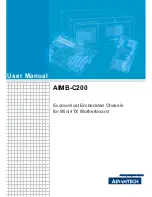
1-8
Cisco ASA Series CLI Configuration Guide
Chapter 1 Adding an Extended Access Control List
Configuring Extended ACLs
Detailed Steps
Adding an ACE for Security Group-Based Policy (TrustSec)
If you configure the Cisco TrustSec feature, you can control traffic based on security groups.
Prerequisites
See
Chapter 1, “Configuring the ASA to Integrate with Cisco TrustSec,”
to enable TrustSec.
Command
Purpose
access-list
access_list_name
[
line
line_number
]
extended
{
deny
|
permit
}
protocol_argument
[
user_argument
]
source_address_argument
[
port_argument
]
dest_address_argument
[
port_argument
]
[
log
[[
level
] [
interval
secs
] |
disable
|
default
]] [
inactive
|
time-range
time_range_name
]
Example:
hostname(config)# access-list v1 extended
permit ip user LOCAL\idfw any 10.0.0.0
255.255.255.0
Adds an ACE for IP address or FQDN policy, as well as optional usernames
and/or groups. For common keywords and arguments, see the
ACE for IP Address or Fully Qualified Domain Name-Based Policy”
section on page 1-4
. Keywords and arguments specific to this type of ACE
include the following:
user_argument
is for use with the identity firewall feature, and specifies the
user or group for which to match traffic in addition to the source address.
Available arguments include the following:
•
object-group-user
user_obj_grp_id
—Specifies a user object group
created using the
object-group user
command.
•
user
{[
domain_nickname
\
]
name
|
any
|
none
}—Specifies a username.
Specify
any
to match all users with user credentials, or
none
to match
users without user credentials. These options are especially useful for
combining
access-group
and
aaa authentication match
policies.
•
user-group
[
domain_nickname
\\
]
user_group_name
—Specifies a user
group name.
Note
Although not shown in the syntax at left, you can also use TrustSec
security group arguments.
Summary of Contents for 5505 - ASA Firewall Edition Bundle
Page 28: ...Glossary GL 24 Cisco ASA Series CLI Configuration Guide ...
Page 61: ...P A R T 1 Getting Started with the ASA ...
Page 62: ......
Page 219: ...P A R T 2 Configuring High Availability and Scalability ...
Page 220: ......
Page 403: ...P A R T 2 Configuring Interfaces ...
Page 404: ......
Page 499: ...P A R T 2 Configuring Basic Settings ...
Page 500: ......
Page 533: ...P A R T 2 Configuring Objects and Access Lists ...
Page 534: ......
Page 601: ...P A R T 2 Configuring IP Routing ...
Page 602: ......
Page 745: ...P A R T 2 Configuring Network Address Translation ...
Page 746: ......
Page 845: ...P A R T 2 Configuring AAA Servers and the Local Database ...
Page 846: ......
Page 981: ...P A R T 2 Configuring Access Control ...
Page 982: ......
Page 1061: ...P A R T 2 Configuring Service Policies Using the Modular Policy Framework ...
Page 1062: ......
Page 1093: ...P A R T 2 Configuring Application Inspection ...
Page 1094: ......
Page 1191: ...P A R T 2 Configuring Unified Communications ...
Page 1192: ......
Page 1333: ...P A R T 2 Configuring Connection Settings and QoS ...
Page 1334: ......
Page 1379: ...P A R T 2 Configuring Advanced Network Protection ...
Page 1380: ......
Page 1475: ...P A R T 2 Configuring Modules ...
Page 1476: ......
Page 1549: ...P A R T 2 Configuring VPN ...
Page 1550: ......
Page 1965: ...P A R T 2 Configuring Logging SNMP and Smart Call Home ...
Page 1966: ......
Page 2059: ...P A R T 2 System Administration ...
Page 2060: ......
Page 2098: ...1 8 Cisco ASA Series CLI Configuration Guide Chapter 1 Troubleshooting Viewing the Coredump ...
Page 2099: ...P A R T 2 Reference ...
Page 2100: ......
















































